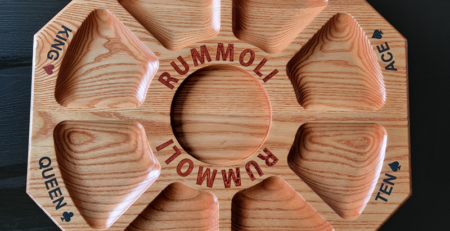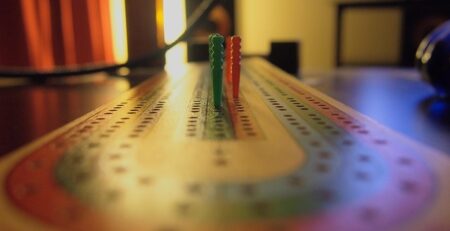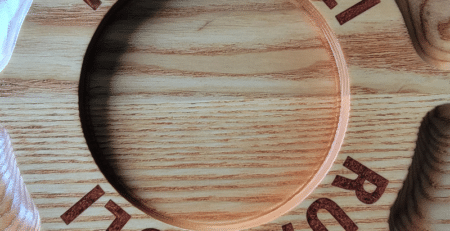Mancala Rules and History: A Timeless Game of Strategy
Mancala Rules and History: A Timeless Game of Strategy
At The Original Workshop, we celebrate handcrafted games that bring people together, and few games are as rich in history and strategy as Mancala. This ancient game, played across generations and continents, is as engaging today as it was thousands of years ago. Below is a complete guide to playing Mancala (specifically the popular variant known as Kalah), along with a deeper look at the game’s fascinating global origins.
Mancala Rules (Kalah Variant)
Equipment & Setup
- Board: Two rows of six small pits (12 total) and one large store at each end.
- Pieces: 48 stones or seeds (4 per small pit).
- Positioning: Each player controls the six pits on their side and the store to their right.
Objective
The goal is to collect more seeds in your store than your opponent.
Gameplay
- Pick a Pit: On your turn, choose one of your own non-empty pits.
- Sow the Seeds: Pick up all seeds and distribute one at a time counterclockwise into subsequent pits and your store (skip your opponent’s store).
- Extra Turn: If the last seed lands in your store, take another turn.
- Capturing: If your last seed lands in an empty pit on your side, and the opposite pit has seeds, capture both into your store.
- Turn Ends: Play passes to your opponent when your move is complete.
Ending the Game
The game ends when one player’s six pits are empty. The other player collects all remaining seeds on their side. The player with the most seeds in their store wins.
Historical Origins of Mancala
Ancient Roots
Mancala is considered one of the oldest known board games. Archaeological findings trace it back over 7,000 years, with ancient boards discovered in Jordan, Ethiopia, and Eritrea. Mancala boards carved into stone have been uncovered in ancient ruins, some dating back to the 6th and 7th centuries AD (Wikipedia).
Meaning and Migration
The word “Mancala” comes from the Arabic root naqala, meaning “to move.” This refers to the strategic movement of seeds around the board. As Arab traders traveled across Africa and into Asia, they brought the game with them. It quickly spread across the Middle East, sub-Saharan Africa, and eventually to Southeast Asia and the Americas.
African Legacy
- Ayo (Ayoayo): A popular Nigerian version of Mancala played with similar pit-and-store mechanics (Wikipedia).
- Oware: Widely played in Ghana and the Caribbean. It emphasizes capturing strategies and is often played in tournaments (Wikipedia).
- Bao: Originating in East Africa (Kenya, Tanzania), Bao uses a more complex 4×8 board and includes special rules for capturing, making it one of the most strategic Mancala variants (Wikipedia).
Southeast Asian & Indian Variants
- Congkak (Malaysia/Indonesia): Features 7 pits per side and 2 stores. Seeds are sown in a clockwise direction (Wikipedia).
- Sungkâ (Philippines): Often played with cowrie shells on carved wooden boards (Wikipedia).
- Pallanguzhi (India): A Tamil variant with 7 pits per side, traditionally played with tamarind seeds (Wikipedia).
Spread to the West
The transatlantic slave trade helped bring Mancala variants like Ayo and Oware to the Caribbean and Southern United States, where they became embedded in African diaspora culture.
In the 20th century, Kalah was introduced by William Julius Champion Jr. in 1940. He simplified the rules for Western audiences, and Kalah remains the most commonly known Mancala variant in North America today.
Cultural Significance
Mancala is more than just a game. In many cultures, it’s used to teach children counting, strategic thinking, and planning. It’s a communal experience that brings generations together, whether played in a village square or on a handmade board in a family home.
Mancala Boards: A Global View
To enrich your appreciation for the game, here are some visual examples of Mancala boards from around the world:
- Traditional African Board: Intricately carved from wood, often hinged for portability.
- Southeast Asian Congkak Board: Long and slender, sometimes decorated with bright lacquer or carvings.
- Modern Kalah Board: Simple and minimalistic, crafted for ease of play and portability.
- Bao Board: Featuring four rows, often carved with symbols or used ceremonially.

At The Original Workshop, we value the craft behind games like Mancala. From rich wood grains to cultural tradition, every board tells a story. If you’re interested in adding a handcrafted Mancala board to your collection, contact us or browse our portfolio today.
Let the seeds fall—and the strategy begin.











